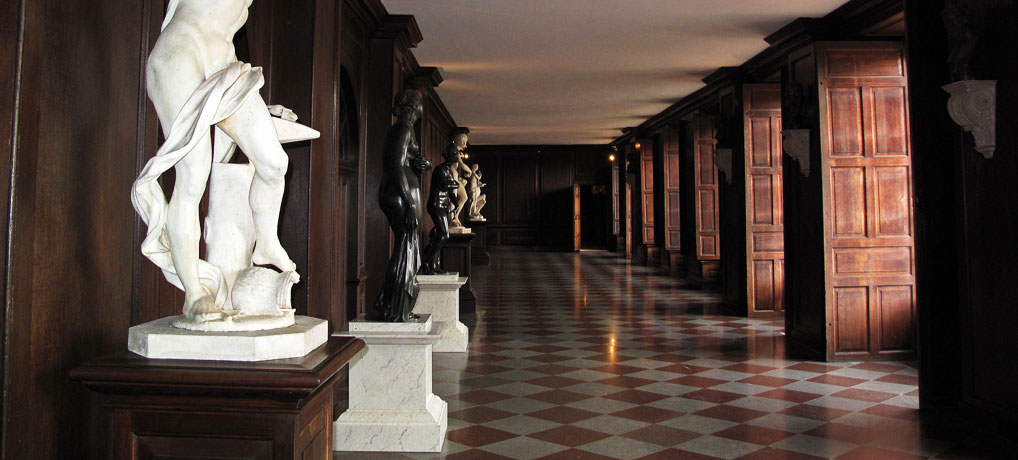Daughters of the aristocracy were until fairly recent times considered as properties to be used by their parents to the best advantage of the family. The oldest son was the heir, traditionally the second son was the “spare” since there was an excellent chance the firstborn would not live long enough to assume his inheritance. Third and further sons were taught to read and write and go into the church where they would not have legitimate offspring, but might well live very comfortable lives with all the pleasures of a rich household.

The function of daughters was to be used to strengthen family connections, to whom she was married was simply none of her business. For senior members of the aristocracy, her role was to unite family bonds. For sovereigns the role of the princess was to strengthen international alliances The arrangements were often made before the couple reached puberty, and such was the case with Catherine, the youngest surviving child of King Ferdinand II of Aragon and Queen Isabela I of Castile. Catherine was affianced and then married to Prince Arthur, oldest son of King Henry VII of England, who was 15 years old at the time of marriage. Twenty weeks later, Arthur died. Catherine swore their marriage had not been consummated. Arthur’s 10 year old brother, Henry, was the “spare.” King Henry VII, anxious to strengthen the alliance between Spain and England, offered “the spare” as replacement (sons were used in the international match making, not only daughters). For young Henry, the new heir to the throne of England, to marry his brother’s widow a dispensation from the Pope was required to overrule the impediment of affinity because, as told in the book of Leviticus, “If a brother is to marry the wife of a brother they will remain childless.”
Pressure was brought by the Spanish throne on Pope Julian II who granted the necessary dispensation. Henry, 14 months after his brother’s death, was betrothed to the much older Catherine. Henry had a first-rate education from leading tutors, was fluent in Latin, French, and Spanish; it was expected the throne would pass to Prince Arthur, Henry was educated for a life in the church.
By 1505, Henry VII had lost interest in a Spanish alliance and the younger Henry declared that his betrothal had been arranged without his consent. Continued diplomatic maneuvering over the fate of the proposed marriage lingered until the death of Henry VII in 1509. Henry was proclaimed King of England on 22nd of April 1509 following the death from tuberculosis of his father King Henry VII. Only 17 years old, Henry married Catherine on 11 June 1509 and, on 24 June 1509, the two were crowned at Westminster Abbey.
Catherine’s first pregnancy resulted in the premature birth of a stillborn daughter in 1510. Henry’s first living (legitimate) child was born January 1st 1511, and named Henry after his father and grandfather. On February 23rd Prince Henry died. On 18 February 1516, Queen Catherine bore Princess Mary, Henry’s first (legitimate) child to survive infancy.
Henry was described as attractive, charismatic, educated and accomplished, and was both author and composer. He was the first well-educated English king, thoroughly at home in his well-stocked library, and as they grew older he found comfortable intellectual companionship with Catherine. But he believed it necessary to provide England with a male heir, a daughter might not be allowed to inherit the throne, France was questioning her legitimacy, she would be unable to consolidate the Tudor Dynasty and the fragile peace that existed in England following the Wars of the Roses. A son was needed and the ageing Catherine was not producing one. One may either think of Henry as full of passion for other women, or as a sage king intent on stabilizing the throne, either way Catherine had to go – the kings of France and Scotland had both received from the pope annulments of their marriages, why not England? But the intensely complicated politics of the time were against him.
Wolsey did not accomplish the necessary for Henry, he did not obtain the annulment, and his life was in jeopardy. There are differing versions of how Hampton Court became Henry VIII’s property. One suggestion is Wolsey knew his king was jealous of Hampton Court, a far more attractive and luxurious palace than any of the sixty or more residences, manors and castles the king owned, so in 1528 he presented it to him – the whole thing, palace, pictures, furnishings – everything. In 1521 when Wolsey wrote to Henry he referred to “Your House of Hampton Court.” This version is supported by documents showing the transfer had occurred before 1529 when an Act of Attainder (conviction of treason without the nicety of a trial) took the rest of Wolsey’s property. The other version, Henry and Anne Boleyn together inspected York Place which Wolsey had vacated, decided they would take it, and all of his other residences: Tittenganger, Esher, The More and Hampton Court. York Place and all its gold plate belonged to the church, they were not Wolsey’s private property, but Henry knew his lawyers would fix a minor issue like that. In fact Henry made an exchange of property, three of his for one of the Order of the Hospitallers, and from June 5th 1531 Hampton Court became the property of the Crown..
Wolsey’s demise was postponed by only a couple of years which he spent in his diocese of York while Henry with Anne Boleyn enjoyed each other at Hampton Court. He died November 1530, under arrest, on his way to London and an almost certain execution.
